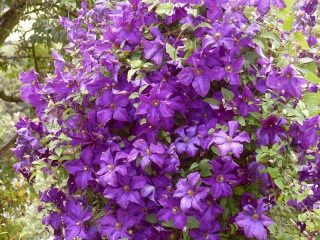Content
Light yellow flowers decorate the steppes and meadows of Russia in summer: this is the salsify. The leaves and roots of the plant are endowed with rich taste and beneficial substances; they are used in various fields - from cooking to cosmetology. It won’t be difficult to grow it with your own hands and use it for the right purposes. But first things first.
Botanical description of the species
Salsify (lat. Tragopogon dubius) is a biennial plant belonging to the genus Tragopogon of the Asteraceae family of the order Asterales. It is characterized by the following external features:
- height - from 30 cm to 1 m, less often - up to 1.5 m;
- root - taproot;
- stems are erect, simple or slightly branched, finely ribbed, glabrous, sometimes with slight pubescence near the base of the leaves;
- leaves linear or linear-lanceolate, with entire edges without teeth or notches, alternate, sessile;
- leaf length – 7-20 cm, width – 6-20 mm;
- the leaves at the bottom of the stems are larger than at the top;
- flowers are ligulate, bisexual, pale yellow;
- the flowers have a feature characteristic of all salsify - a tuft similar to a goatee;
- inflorescences in the form of baskets, up to 70 mm in length, located at the top of the stem and side branches, bloom in the morning and close in the late evening;
- the involucres of the inflorescences consist of 8-12 (rarely 16) leaves, which are significantly longer than the flowers themselves;
- the legs of the baskets are swollen with fruit;
- peduncles are swollen, empty inside, up to 1.5 cm in diameter, thickened under the baskets in the form of a club.

Characteristic signs of the salsify dubious are pale yellow flowers and inflorescences in the form of baskets
The flowering period of salsify is doubtful - from May to August, fruiting occurs from June to September. The germination of seeds of this plant is up to 3 years.
Distribution area
The salsify plant grows mainly:
- in the steppe area;
- in the meadows;
- on the edges and slopes.
It grows much less often:
- in groves of bushes;
- in pine forests;
- among thickets of weeds;
- on roadsides.
On the territory of Russia, this variety of salsify is characteristic of the Middle Zone, in particular the Black Earth Region. In northern latitudes the plant can be found extremely rarely.
Features of cultivation
Salsify is very unpretentious to growing conditions, and can easily grow even on soil poor in moisture. But to promote rich fruiting and excellent taste, it is better to plant it in fertile soil, with mandatory regular irrigation with water.
The optimal time for sowing seeds is early spring. However, this can also be done in winter. Salsify plants are cold-resistant plants, so they will tolerate frosts normally.
Plant care
As for caring for the dubious salsify, there are also no surprises here: weeding, loosening, and, if necessary, watering.
It is imperative to remove flower stalks from first-year salsify. If this is not done and they are allowed to bloom, the nutritional value of the root will be negatively affected: it will become tough and lose some of its taste.
Application
The high concentration of starch and proteins in the roots of Salsify dubious makes it no less healthy and nutritious than traditional cultivated vegetables. The roots and stems with leaves are eaten. A significant drawback of salsify as a food product is its milky juice, which imparts a sharp, bitter taste.
The way to get rid of it is simple - soaking and then boiling in water, with the obligatory addition of salt. After this, the bitterness disappears, and instead the stems and roots acquire a sweetish flavor. They are often used as a special ingredient in all kinds of salads, marinades, and creamy sauces. Dried leaves crushed into powder serve as an excellent addition to soups.

Roots, stems and leaves of Salsibus dubious are widely used in cooking.
Unlike other species, salsify is almost never used for medicinal purposes. Its main advantage is its high content of inulin, which helps fight diabetes and stabilizes blood glucose levels.
Salsify dubious is used in the field of cosmetology. Finely chopped roots and above-ground parts are boiled, beaten into a paste and applied to the face. Such masks relieve the skin from irritation and acne, nourish it with useful substances.A decoction of the leaves and stems of this plant serves as an anti-dandruff remedy and saturates the hair roots with nutrients.
Conclusion
Salsify is a traditional plant of the steppe region, widespread in central Russia. It is planted in winter or early spring, flowering from May to August, fruiting from June to September. The benefits of this plant are expressed in the use of roots and above-ground parts in cooking, professional cosmetology, and folk medicine.








